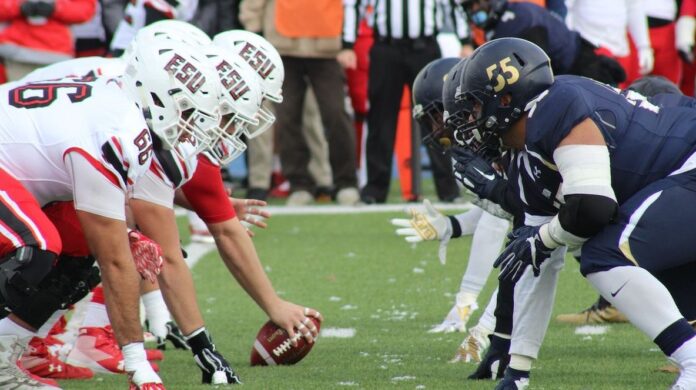
Sports in the United States have always carried a sense of excitement, competition, and pride. The year 2025 continues this tradition, with the most popular sports commanding attention from millions across the nation.
Each game offers something special, whether it is the fast-paced action of basketball, the tactical brilliance of soccer, or the powerhouse plays that define football. These sports are not just games; they are deeply woven into the fabric of American culture.
This list highlights the 13 most popular sports, showing why they stand out and continue to thrive.
1. American Football
American football is the top sport in the United States, attracting millions of fans and dominating both professional and collegiate sports landscapes.
It blends intense physical competition with strategic gameplay, making it a standout among the most popular sports.
The History and Growth of American Football
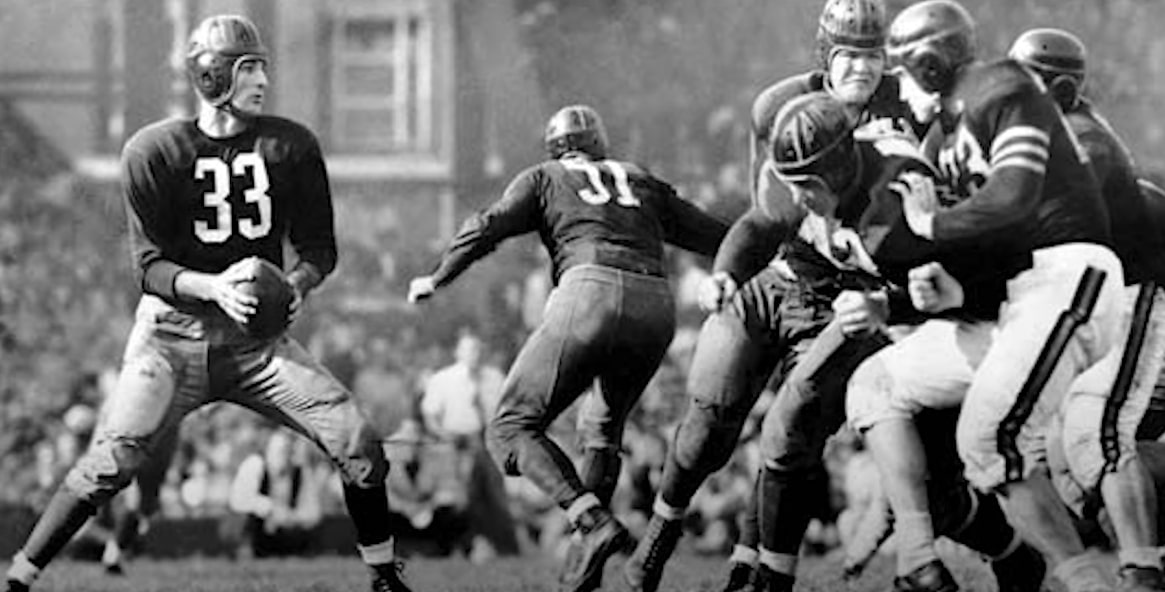
The origins of American football can be traced to the late 19th century, evolving from soccer and rugby. In 1869, Princeton and Rutgers played the first college football game.
Over time, the introduction of new rules, such as the forward pass and the downs system, created the unique version of football known today. The NFL, established in 1920, has grown into the world’s most lucrative professional sports league.
Popularity and Viewership
- NFL Dominance: The NFL regularly draws millions of viewers, with the Super Bowl attracting over 100 million annually.
- College Football Craze: States like Alabama, Texas, and Michigan show unparalleled enthusiasm for their college teams, with stadiums hosting over 100,000 fans per game.
- Fantasy Football: Over 40 million Americans participate in fantasy football leagues, showcasing its broad appeal.

Top NFL Teams and Achievements
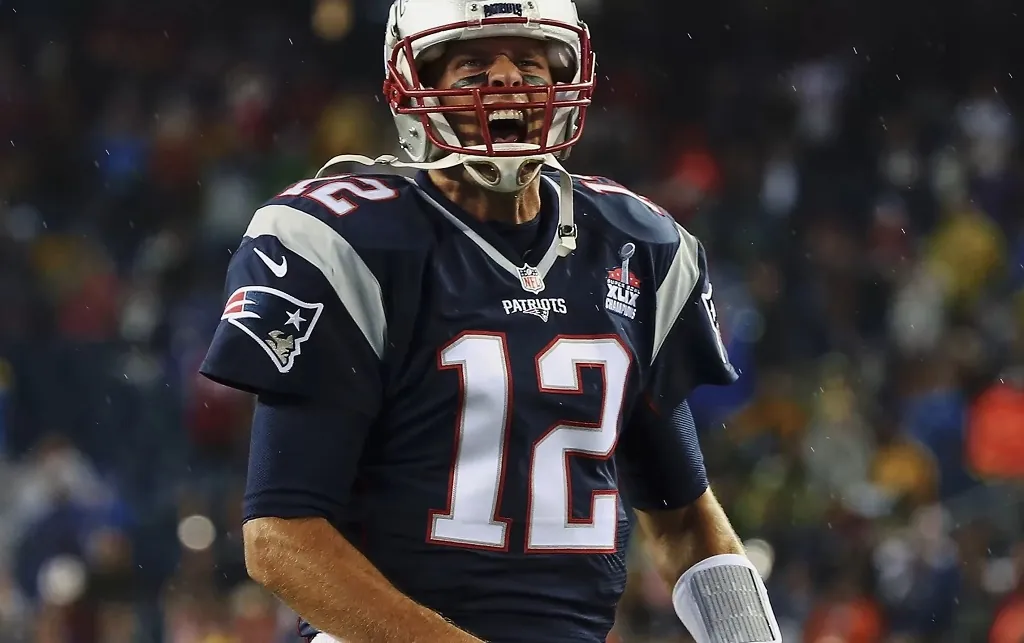
| Team | Super Bowl Wins | Iconic Players | Stadium |
|---|---|---|---|
| New England Patriots | 6 | Tom Brady, Rob Gronkowski | Gillette Stadium |
| Pittsburgh Steelers | 6 | Terry Bradshaw, Franco Harris | Acrisure Stadium |
| San Francisco 49ers | 5 | Joe Montana, Jerry Rice | Levi’s Stadium |
| Dallas Cowboys | 5 | Troy Aikman, Emmitt Smith | AT&T Stadium |
| Green Bay Packers | 4 | Brett Favre, Aaron Rodgers | Lambeau Field |
Cultural and Financial Influence
- Revenue: The NFL generates over $20 billion annually, contributing to its position as the world’s most profitable sports league.
- Economic Impact: Football games boost local economies, especially in cities with NFL franchises and college towns, where hotels, restaurants, and other businesses thrive on game days.
- Merchandise Sales: Teams like the Dallas Cowboys and Green Bay Packers consistently lead in jersey and memorabilia sales.
2. Basketball
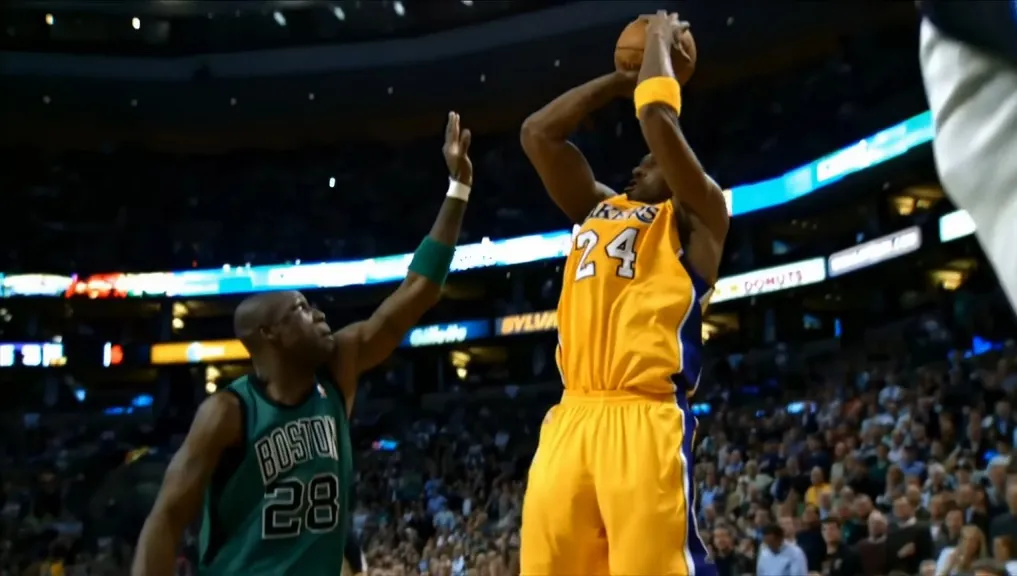
Basketball is one of the most popular sports in the United States, celebrated for its fast pace, high-scoring games, and incredible athleticism.
With a rich history and a massive global following, basketball has firmly established itself as a cornerstone of American sports culture.
The History and Evolution of Basketball
Basketball was invented in 1891 by Dr. James Naismith as a way to keep students active indoors during winter. Using a peach basket as the first hoop, the game quickly gained popularity and grew into a structured sport.
By 1946, the National Basketball Association (NBA) was formed, becoming the premier league for professional basketball.
Today, basketball is played at all levels, from youth leagues to the NBA, with millions tuning in to watch games across the country.
Popularity and Viewership
- NBA’s Influence: The NBA is one of the most popular sports leagues globally, with an average of 1.6 million viewers per game in the 2023-2024 season.
- March Madness: The NCAA men’s basketball tournament attracts over 10 million viewers per game during its peak, making it one of the most followed college sports events in the country.
- Local Impact: Community and high school basketball leagues are a cornerstone in many neighborhoods, fostering talent and passion for the sport.
Top NBA Teams and Achievements
| Team | Championships Won | Iconic Players | Home Arena |
|---|---|---|---|
| Los Angeles Lakers | 17 | Magic Johnson, Kobe Bryant, LeBron James | Crypto.com Arena |
| Boston Celtics | 17 | Larry Bird, Bill Russell, Paul Pierce | TD Garden |
| Golden State Warriors | 7 | Stephen Curry, Kevin Durant, Klay Thompson | Chase Center |
| Chicago Bulls | 6 | Michael Jordan, Scottie Pippen | United Center |
| Miami Heat | 3 | Dwyane Wade, Shaquille O’Neal, Jimmy Butler | Kaseya Center |
Cultural and Financial Impact
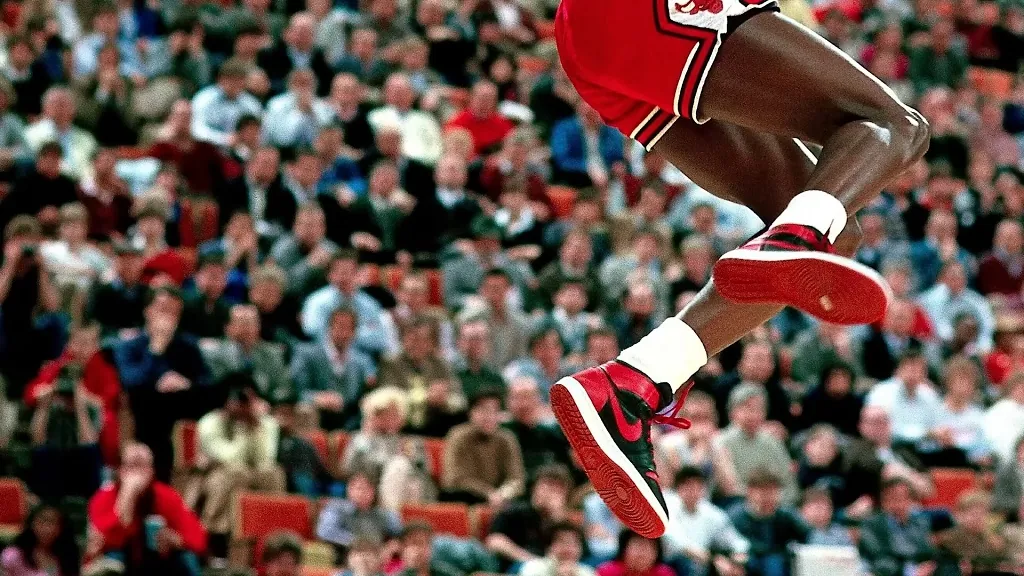
Basketball’s influence extends beyond the court, impacting fashion, music, and culture:
- Shoe Market: Players like Michael Jordan revolutionized the athletic shoe industry, with Air Jordans generating over $5 billion annually in global sales.
- Entertainment: Basketball has inspired movies like Space Jam and Coach Carter while being a central theme in music and urban culture.
- Revenue: The NBA earns over $10 billion annually, making it one of the richest sports leagues in the world.
Grassroots Development
- Youth Leagues: Programs like AAU (Amateur Athletic Union) help develop young talent and provide a pathway to college basketball and the NBA.
- Community Engagement: Basketball courts in neighborhoods serve as gathering spots, promoting inclusivity and athleticism.
3. Baseball

Baseball, often referred to as “America’s pastime,” has been a cornerstone of sports culture in the United States for over a century.
While its popularity has faced competition from other sports, it remains a cherished tradition with millions of devoted fans and a strong presence at professional, collegiate, and local levels.
The interesting fact is that it is one of the most popular sports in the US, while it is on the margins in other countries. Most even don’t have a professional league.
The History and Evolution of Baseball
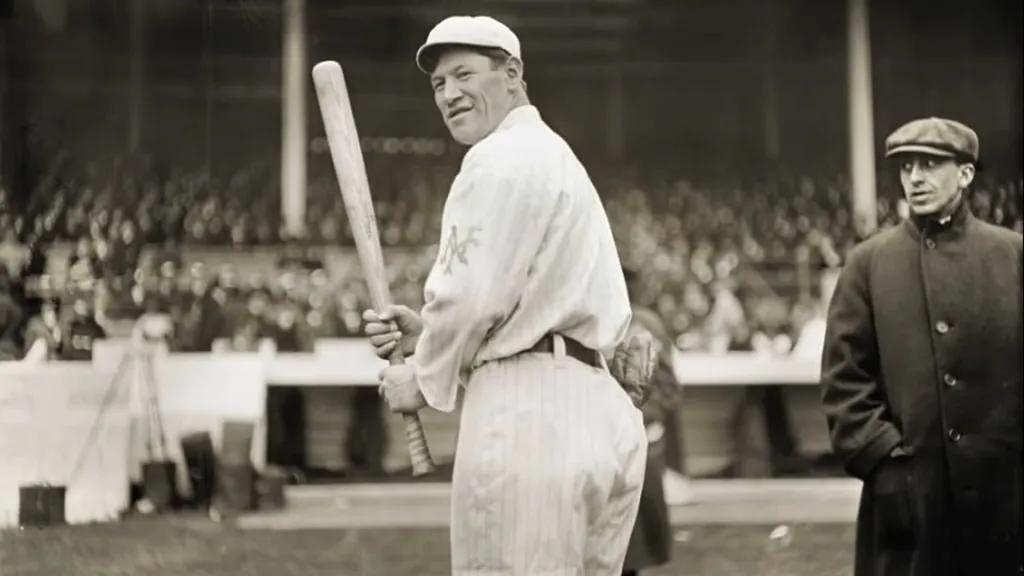
Baseball’s origins date back to the 19th century, with its modern form solidified in 1869 when the Cincinnati Red Stockings became the first professional team.
The formation of Major League Baseball (MLB) in 1903 unified two competing leagues, creating the foundation for one of the most popular sports organizations in history.
Baseball’s influence grew rapidly through the 20th century, with legendary players like Babe Ruth, Jackie Robinson, and Hank Aaron transforming the sport into a symbol of American culture and progress.
Popularity and Viewership

- MLB’s Reach: The MLB attracts over 68 million fans annually to its stadiums and boasts millions more watching games on TV and streaming platforms.
- World Series: The pinnacle of the MLB season, the World Series, garners an average of 10-15 million viewers per game, making it one of the most-watched sporting events in the U.S.
- Youth Participation: Over 15 million young players participate in baseball and tee-ball programs, keeping the sport’s legacy alive in communities nationwide.
Top MLB Teams and Achievements
| Team | World Series Wins | Iconic Players | Home Stadium |
|---|---|---|---|
| New York Yankees | 27 | Babe Ruth, Derek Jeter, Mariano Rivera | Yankee Stadium |
| St. Louis Cardinals | 11 | Stan Musial, Albert Pujols | Busch Stadium |
| Boston Red Sox | 9 | Ted Williams, David Ortiz | Fenway Park |
| Los Angeles Dodgers | 7 | Jackie Robinson, Clayton Kershaw | Dodger Stadium |
| San Francisco Giants | 8 | Willie Mays, Barry Bonds | Oracle Park |
Cultural and Financial Significance
Baseball has deep cultural and financial roots in the United States:
- Tradition: Rituals like singing the national anthem, the seventh-inning stretch, and eating hot dogs at games are iconic parts of baseball culture.
- Economic Impact: MLB contributes $10 billion annually to the U.S. economy, through ticket sales, merchandise, and local business support near stadiums.
- Cultural Representation: Films like Field of Dreams, The Sandlot, and Moneyball highlight baseball’s role in American storytelling.
Minor Leagues and Grassroots Growth
- Minor League System: The MLB’s minor league system fosters young talent, with over 200 teams serving as stepping stones to the majors.
- Little League Baseball: Little League, founded in 1939, involves over 2 million kids annually, creating a pipeline for future players and fans.
4. Soccer

Soccer, known globally as football, has seen a meteoric rise in popularity in the United States over the past few decades.
While historically overshadowed by other sports, it has now established a significant foothold, driven by growing fan enthusiasm, international stars, and expanding professional leagues.
With current trends, it could become a rival to basketball and American football over holding the first place when it comes to the most popular sports in the US.
The History and Growth of Soccer in the US

Soccer’s roots in the United States can be traced back to the late 19th century, but it remained a niche sport for much of its early history.
The founding of Major League Soccer (MLS) in 1993 marked a turning point, providing a professional platform for the game to grow domestically.
Hosting the FIFA World Cup in 1994 was a landmark moment, bringing global attention to the sport. Since then, the U.S. has emerged as a competitive force in international soccer, with the men’s and women’s national teams inspiring new generations of players and fans.
Popularity and Viewership
- MLS Expansion: Major League Soccer has grown to include 29 teams in the U.S. and Canada, with average attendance surpassing 20,000 fans per game.
- World Cup Viewership: The 2022 FIFA World Cup attracted over 26 million U.S. viewers for key matches, reflecting the sport’s growing appeal.
- Youth Participation: Soccer is one of the most popular sports in the country among younger generations, with over 3 million kids registered in leagues nationwide.
Top MLS Clubs and Achievements
| Club | MLS Cups Won | Star Players | Home Stadium |
|---|---|---|---|
| LA Galaxy | 5 | Landon Donovan, Zlatan Ibrahimović | Dignity Health Sports Park |
| DC United | 4 | Jaime Moreno, Wayne Rooney | Audi Field |
| Seattle Sounders FC | 2 | Clint Dempsey, Nicolás Lodeiro | Lumen Field |
| Atlanta United FC | 1 | Josef Martínez, Miguel Almirón | Mercedes-Benz Stadium |
| New York City FC | 1 | David Villa, Maxi Moralez | Yankee Stadium |
Cultural and Financial Impact
View this post on Instagram
Soccer has cemented its role in U.S. culture and continues to expand its influence:
- Crossover Appeal: International stars like Lionel Messi, Cristiano Ronaldo, and Megan Rapinoe have helped bridge the gap between domestic and global soccer.
- Diverse Fan Base: Soccer’s popularity thrives on its appeal to immigrant communities and younger generations.
- Revenue Growth: MLS generated over $1 billion in revenue in 2023, with steady growth fueled by sponsorships, broadcasting deals, and international partnerships.
International Soccer Influence
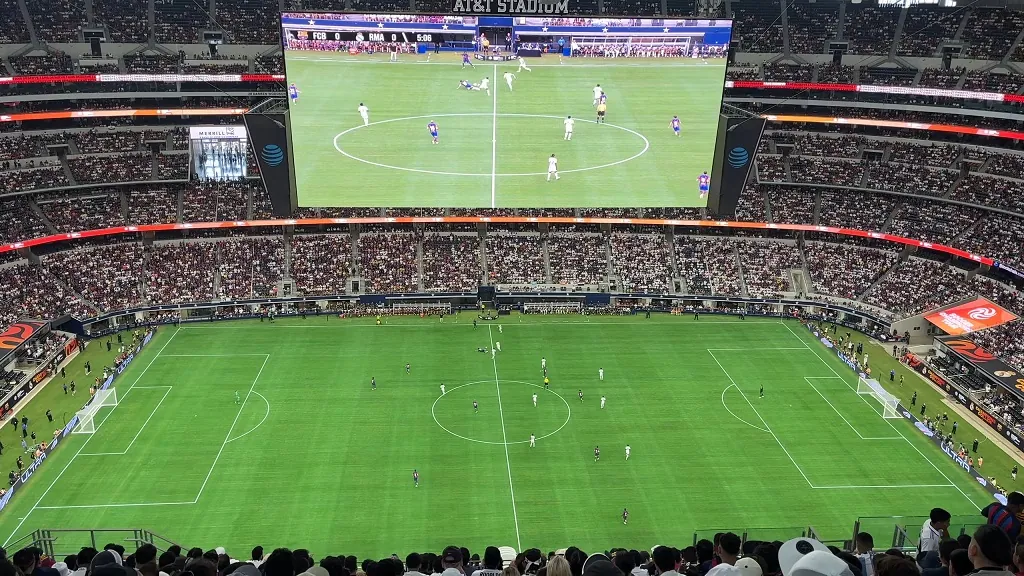
The U.S. is also a hub for international soccer events:
- European Tours: Top European clubs like Real Madrid and Manchester United regularly play exhibition matches in U.S. cities, drawing massive crowds.
- Women’s Soccer: The U.S. Women’s National Team has won four FIFA Women’s World Cups, establishing itself as a global powerhouse and inspiring millions of young athletes.
Also, check out the biggest football stadiums in the world.
5. Ice Hockey
Ice hockey holds a unique position in the United States, blending speed, skill, and physicality. Known for its passionate fan base and thrilling games, it remains a major sport, particularly in regions where cold winters make the game part of local traditions.
The History of Ice Hockey in the US
Ice hockey’s origins trace back to Canada in the 19th century, with the sport gaining traction in the U.S. by the early 20th century.
The National Hockey League (NHL), founded in 1917, expanded to include American teams like the Boston Bruins in 1924.
The growth accelerated in the mid-20th century with the addition of iconic teams like the Chicago Blackhawks and New York Rangers.
The “Miracle on Ice,” when the U.S. men’s hockey team defeated the Soviet Union in the 1980 Winter Olympics, remains a pivotal moment in the sport’s history, inspiring generations of players and fans.
Popularity and Viewership

- NHL Dominance: The NHL features 32 teams, with franchises in major markets like New York, Chicago, and Los Angeles. The Stanley Cup Finals attract millions of viewers annually, with over 4.6 million tuning in for Game 5 in 2023.
- Regional Passion: Ice hockey thrives in northern states like Minnesota, Michigan, and Massachusetts, where youth participation is highest.
- Youth Hockey: Over 550,000 players are registered with USA Hockey, showcasing the sport’s strong grassroots presence.
Top NHL Teams and Achievements
| Team | Stanley Cup Wins | Iconic Players | Home Arena |
|---|---|---|---|
| Montreal Canadiens | 24 | Maurice Richard, Jean Beliveau | Bell Centre |
| Detroit Red Wings | 11 | Gordie Howe, Steve Yzerman | Little Caesars Arena |
| Toronto Maple Leafs | 13 | Mats Sundin, Darryl Sittler | Scotiabank Arena |
| Chicago Blackhawks | 6 | Bobby Hull, Patrick Kane | United Center |
| Tampa Bay Lightning | 3 | Steven Stamkos, Victor Hedman | Amalie Arena |
Economic and Cultural Impact
- League Revenue: The NHL generates over $6 billion annually, fueled by ticket sales, broadcasting deals, and merchandise.
- Cultural Integration: Ice hockey is a staple in many northern and midwestern communities, where winter weather makes outdoor rinks a common sight.
- Global Appeal: The NHL draws top talent from around the world, including Canada, Russia, Sweden, and the Czech Republic.
6. Tennis
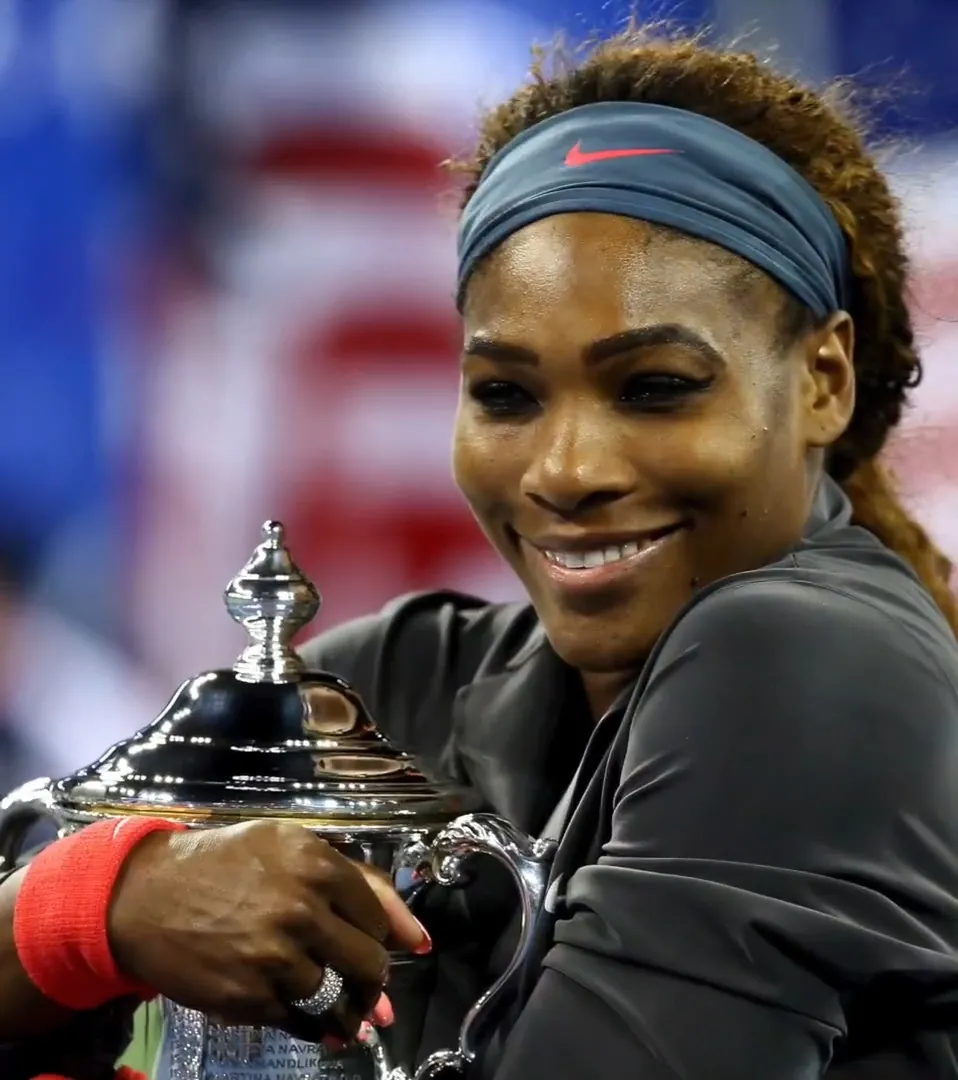
Tennis holds a special place in American most popular sports, combining individual excellence with global appeal.
With legends like Serena Williams, Pete Sampras, and Arthur Ashe leaving lasting legacies, tennis continues to draw fans of all ages.
The History of Tennis in the US
Tennis was introduced to the U.S. in the late 19th century, with the first U.S. National Championships (now the US Open) held in 1881.
The sport gained significant popularity during the 20th century, thanks to icons like Billie Jean King and John McEnroe, who brought excitement and personality to the game.
Today, the US Open remains one of the four Grand Slam tournaments, cementing the country’s position as a hub for global tennis.
Popularity and Viewership
View this post on Instagram
- US Open: Attracts over 700,000 fans annually and millions of viewers worldwide.
- Youth Engagement: Tennis programs like the USTA’s Net Generation introduce over 1 million kids to the sport each year.
- Recreational Players: There are over 17 million recreational tennis players in the U.S., showcasing its widespread appeal.
American Tennis Icons
| Player | Grand Slam Titles | Era | Notable Achievements |
|---|---|---|---|
| Serena Williams | 23 | 2000s-2020s | Most Grand Slam titles in Open Era |
| Pete Sampras | 14 | 1990s-2000s | 7-time Wimbledon Champion |
| Arthur Ashe | 3 | 1960s-1970s | First Black player to win Wimbledon |
| Billie Jean King | 12 | 1960s-1980s | Advocate for gender equality in sports |
| Andre Agassi | 8 | 1990s-2000s | Career Grand Slam Winner |
Cultural and Financial Impact
- Revenue: The US Open generates over $400 million annually, contributing significantly to the USTA’s programs and development.
- Gender Equality: Tennis is one of the few sports where men and women earn equal prize money in major tournaments.
- Community Access: Public courts across the country make tennis one of the most accessible sports.
7. Golf
Golf is a sport of precision and patience, revered for its combination of athletic skill and mental strategy.
In the United States, it enjoys a devoted following, thanks to its rich history, iconic tournaments, and legendary players.
The History of Golf in the US
Golf was introduced to the U.S. in the late 19th century, with the first U.S. Open held in 1895. The establishment of the PGA Tour in 1929 brought structure and professionalism to the sport.
Players like Arnold Palmer, Jack Nicklaus, and Tiger Woods elevated golf’s popularity to new heights in the 20th century.
Popularity and Viewership

- Major Tournaments: The Masters, U.S. Open, and PGA Championship are among the most-watched events, with millions tuning in annually.
- Recreational Golfers: Over 24 million Americans play golf regularly, making it one of the country’s favorite leisure activities.
- Youth Programs: Initiatives like The First Tee introduce over 500,000 kids to golf each year.
Iconic Golfers
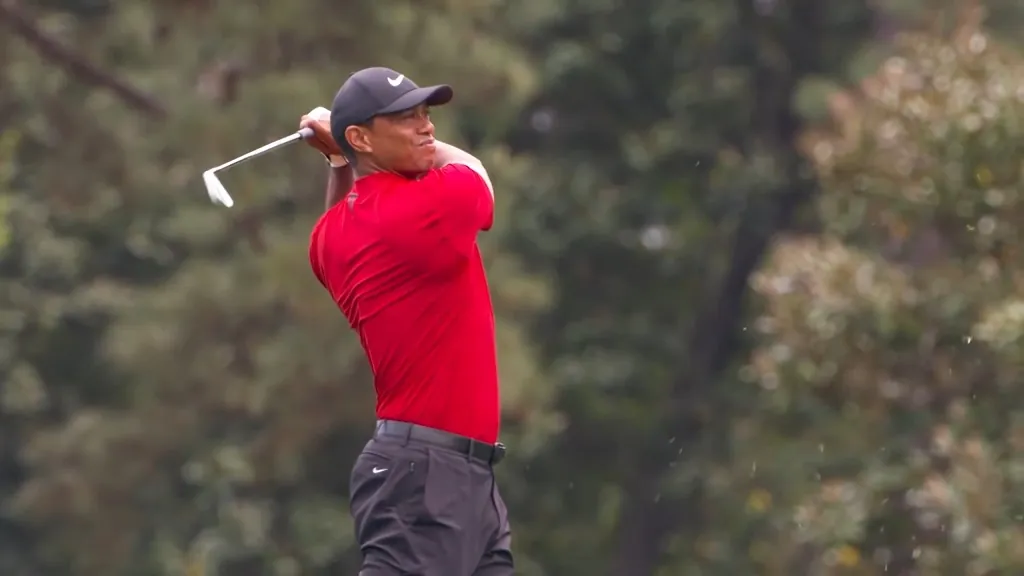
| Player | Major Wins | Era | Notable Achievements |
|---|---|---|---|
| Tiger Woods | 15 | 1990s-2020s | Tied for PGA Tour Wins Record |
| Jack Nicklaus | 18 | 1960s-1980s | Most Major Wins in History |
| Arnold Palmer | 7 | 1950s-1970s | Pioneer of modern golf’s popularity |
| Phil Mickelson | 6 | 1990s-2020s | Oldest Major Winner in Golf History |
| Annika Sörenstam | 10 | 1990s-2000s | Dominated Women’s Golf for a Decade |
Cultural and Financial Impact
- Economic Influence: Golf contributes $84 billion annually to the U.S. economy, including tourism, equipment sales, and course maintenance.
- Prestige: Golf is synonymous with luxury, with many corporate events and networking opportunities centered around the sport.
- Community Access: Public courses make golf more accessible, though it still retains an image of exclusivity.
8. Mixed Martial Arts (MMA)
Mixed martial arts has emerged as one of the fastest-growing sports in the United States. Combining striking, grappling, and submissions from various disciplines, MMA captivates fans with its intensity and versatility.
The Rise of MMA
MMA gained mainstream attention with the founding of the Ultimate Fighting Championship (UFC) in 1993. Early events had minimal rules, but the sport evolved with regulatory changes that emphasized safety and skill.
Iconic fighters like Royce Gracie, Chuck Liddell, and Ronda Rousey played pivotal roles in popularizing the sport.
The UFC, under Dana White’s leadership, has become a global phenomenon, with American fighters like Jon Jones and Conor McGregor (of Irish origin but heavily marketed in the U.S.) elevating its profile.
Popularity and Viewership
- Pay-Per-View Records: UFC 229, featuring Conor McGregor vs. Khabib Nurmagomedov, holds the record with 2.4 million buys.
- Broad Fan Base: Over 18 million fans regularly follow MMA events in the U.S.
- Youth Participation: MMA training programs and gyms are growing in popularity, with thousands of young athletes learning disciplines like jiu-jitsu, wrestling, and kickboxing.
Top UFC Fighters and Achievements
| Fighter | Championship Wins | Era | Notable Achievements |
|---|---|---|---|
| Jon Jones | 2x Light Heavyweight Champion | 2010s-2020s | Longest unbeaten streak in UFC history |
| Ronda Rousey | Women’s Bantamweight Champion | 2010s | First female UFC Hall of Famer |
| Anderson Silva | Middleweight Champion | 2000s-2010s | Longest title reign in UFC history |
| Khabib Nurmagomedov | Lightweight Champion | 2010s-2020s | Undefeated professional record |
| Amanda Nunes | 2-Division Champion | 2010s-2020s | First woman to defend two UFC titles |
Cultural and Financial Impact
View this post on Instagram
- Revenue: The UFC earned over $1 billion in 2022, driven by pay-per-view sales, merchandise, and sponsorships.
- Crossover Appeal: Fighters like McGregor and Rousey have appeared in films, commercials, and other media, expanding MMA’s reach.
- Training Gyms: MMA gyms across the U.S. are attracting fitness enthusiasts and aspiring fighters alike.
9. Boxing
Boxing is one of the oldest and most popular sports that includes combat. Known for its legendary matchups and iconic champions, it continues to draw millions of fans, despite increased competition from other sports.
The History of Boxing in the US
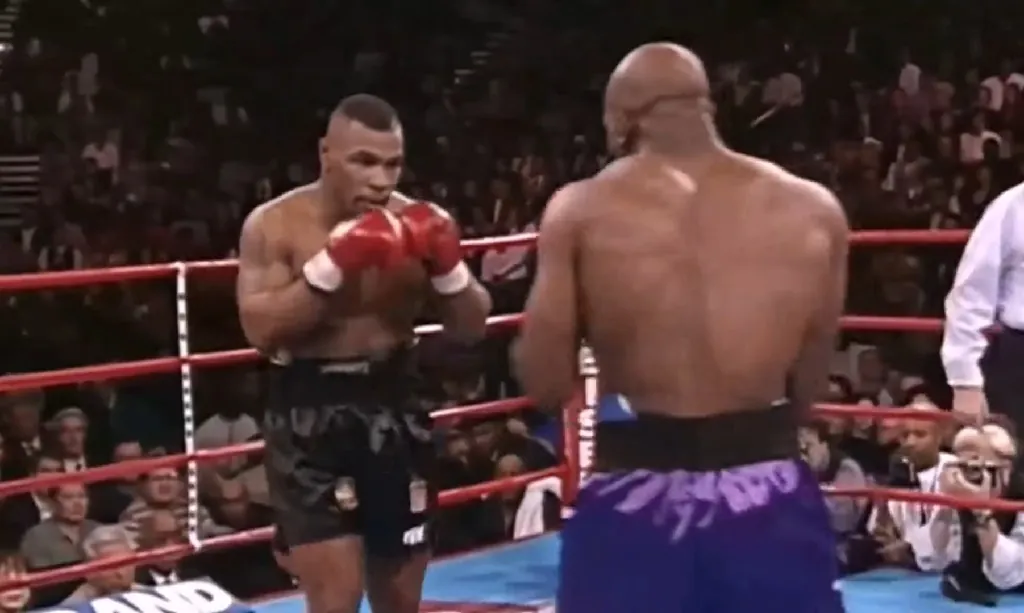
Boxing’s roots in America date back to the 18th century, gaining widespread popularity in the early 20th century with stars like Jack Johnson and Joe Louis.
The post-war era saw fighters like Muhammad Ali and Mike Tyson redefine the sport, making boxing a cultural phenomenon.
Popularity and Viewership
- Pay-Per-View Events: Fights like Floyd Mayweather vs. Manny Pacquiao in 2015 set records with over 4.4 million buys, generating $600 million.
- Youth Participation: Amateur boxing remains a popular entry point, with thousands of gyms and clubs across the U.S.
- Cultural Influence: Boxing has been immortalized in films like Rocky and Raging Bull, reinforcing its place in American culture.
View this post on Instagram
Iconic Boxers
| Boxer | Weight Class | Era | Notable Achievements |
|---|---|---|---|
| Muhammad Ali | Heavyweight | 1960s-1980s | 3-time Heavyweight Champion |
| Mike Tyson | Heavyweight | 1980s-1990s | Youngest Heavyweight Champion |
| Floyd Mayweather Jr. | Welterweight | 1990s-2010s | Undefeated professional record |
| Sugar Ray Leonard | Welterweight | 1970s-1980s | 5-Division World Champion |
| Oscar De La Hoya | Middleweight | 1990s-2000s | 6-Division World Champion |
10. Car Racing
Car racing holds a special place in American sports, driven by a mix of speed, competition, and technical skill. Events like NASCAR and the Indianapolis 500 attract millions of fans every year, showcasing the nation’s love for the sport.
The History of Car Racing in the US
Car racing in the United States dates back to the early 20th century, with races such as the Vanderbilt Cup laying the foundation for competitive motorsports.
The Indianapolis 500, first held in 1911, remains one of the most prestigious events, drawing top drivers and engineers from around the world.
NASCAR, founded in 1948, became a major force in American racing, focusing on stock car competitions.
The Daytona 500, often called “The Great American Race,” solidified NASCAR as a household name. Over the decades, drivers like Richard Petty, Dale Earnhardt, and Jeff Gordon became icons in the sport.
Popularity and Viewership
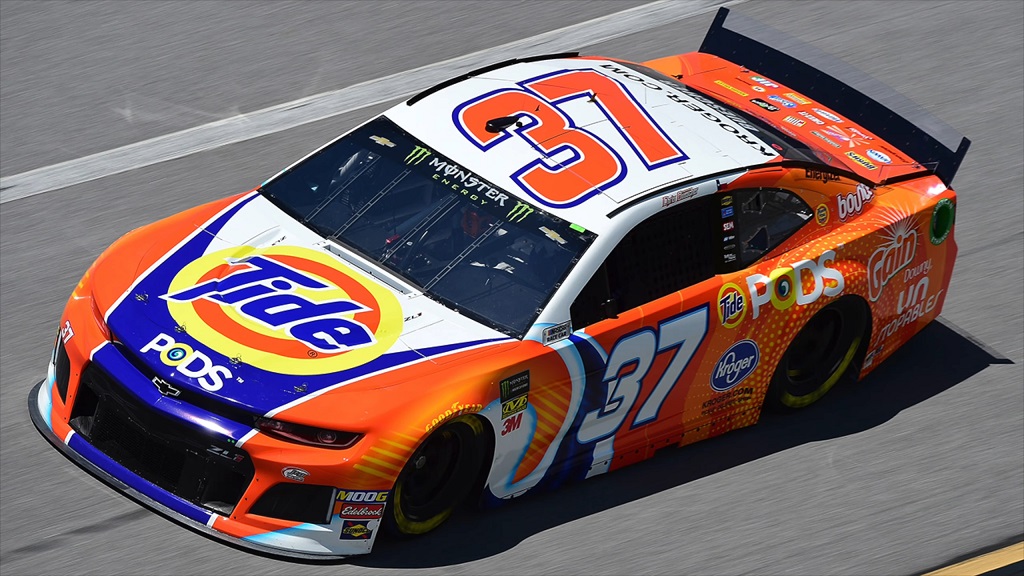
- NASCAR: The Daytona 500 attracts over 9 million viewers annually, with many races drawing large live crowds.
- IndyCar: The Indianapolis 500 boasts 300,000 in-person attendees and millions of television viewers worldwide.
- Grassroots Racing: Local tracks and amateur events keep the sport accessible to fans and aspiring drivers.
Top Car Racing Events and Drivers
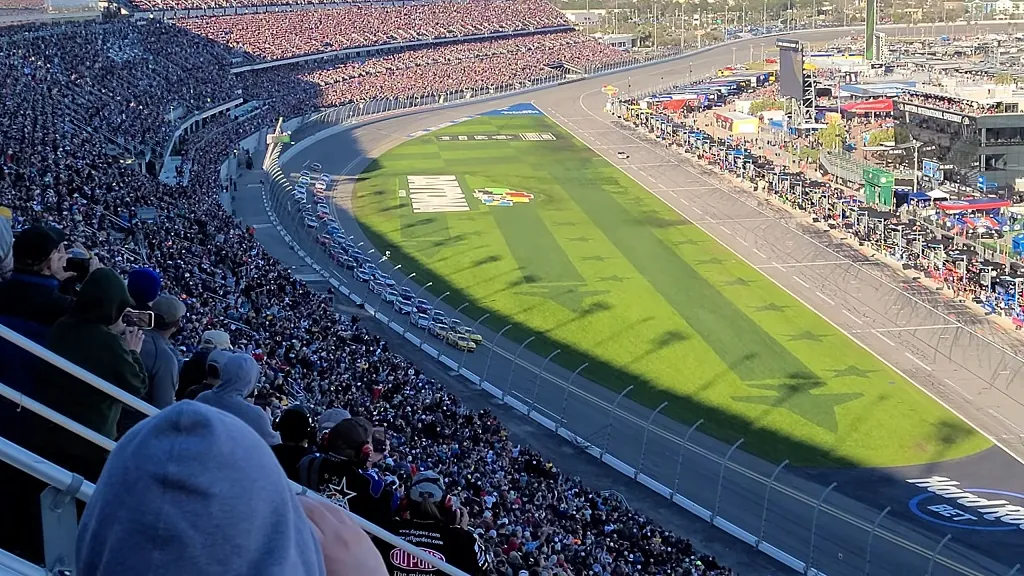
| Event/Series | Notable Drivers | Significance |
|---|---|---|
| Daytona 500 | Richard Petty, Dale Earnhardt | Crown jewel of NASCAR, kicking off the season |
| Indianapolis 500 | Mario Andretti, Helio Castroneves | Premier open-wheel race in the U.S. |
| NASCAR Cup Series | Jeff Gordon, Jimmie Johnson | Flagship series for stock car racing |
| Le Mans 24 Hours (U.S. Teams) | Bruce McLaren, Dan Gurney | American presence in international endurance racing |
11. Ice Skating
Ice skating is celebrated for its blend of athletic skill and artistic expression. It is a major highlight during the Winter Olympics and remains a favorite sport and recreational activity for many Americans.
For many, it could be a surprise to see this one on the list of most popular sports, but it actually holds huge popularity. Not just in the US, but worldwide.
The History of Ice Skating in the US
Ice skating gained national attention in the early 20th century, with performances by athletes like Sonja Henie popularizing the sport.
The establishment of the U.S. Figure Skating Association in 1921 formalized competitive skating, paving the way for American champions like Dick Button, Peggy Fleming, and Scott Hamilton.
The Winter Olympics have been crucial in increasing interest in the sport, with memorable performances such as Peggy Fleming’s gold medal in 1968 and Tara Lipinski’s victory in 1998.
Popularity and Viewership

- Winter Olympics: Figure skating events consistently rank among the most-watched during the Winter Games, with millions tuning in to support Team USA.
- Recreational Skating: Ice rinks across the country host thousands of skaters daily, offering both casual enjoyment and professional training opportunities.
- Youth Participation: Programs like Learn to Skate USA introduce over 1 million kids annually to the basics of ice skating.
Iconic Ice Skaters
| Skater | Era | Achievements |
|---|---|---|
| Peggy Fleming | 1960s-1970s | Olympic gold medalist, 1968 |
| Scott Hamilton | 1980s-1990s | Olympic gold medalist, 1984 |
| Kristi Yamaguchi | 1990s | Olympic gold medalist, 1992 |
| Michelle Kwan | 1990s-2000s | 9-time U.S. champion, 2-time Olympic medalist |
| Nathan Chen | 2010s-2020s | Olympic gold medalist, 2022 |
12. Rugby
Rugby, while not as widely followed as other sports in the U.S., is growing in popularity thanks to its fast-paced nature and the increasing visibility of professional leagues and international competitions.
It is the most popular in the UK and Ireland, but leagues in the US have also seen growth in recent years.
The History of Rugby in the US
Rugby’s history in the United States dates back to the late 19th century. The U.S. men’s rugby team won gold medals in the 1920 and 1924 Olympics, marking its early prominence.
While the sport waned in the mid-20th century, it has seen a resurgence in recent decades, with the establishment of Major League Rugby (MLR) in 2018 providing a professional platform.
Popularity and Viewership
- Major League Rugby: MLR now features 12 teams across the U.S., with games broadcast on national networks.
- World Cup Interest: The Rugby World Cup, particularly the Sevens format, draws growing attention from American audiences.
- College Rugby: Programs at schools like Cal Berkeley and Life University produce some of the nation’s best players.
Top Rugby Teams in the US
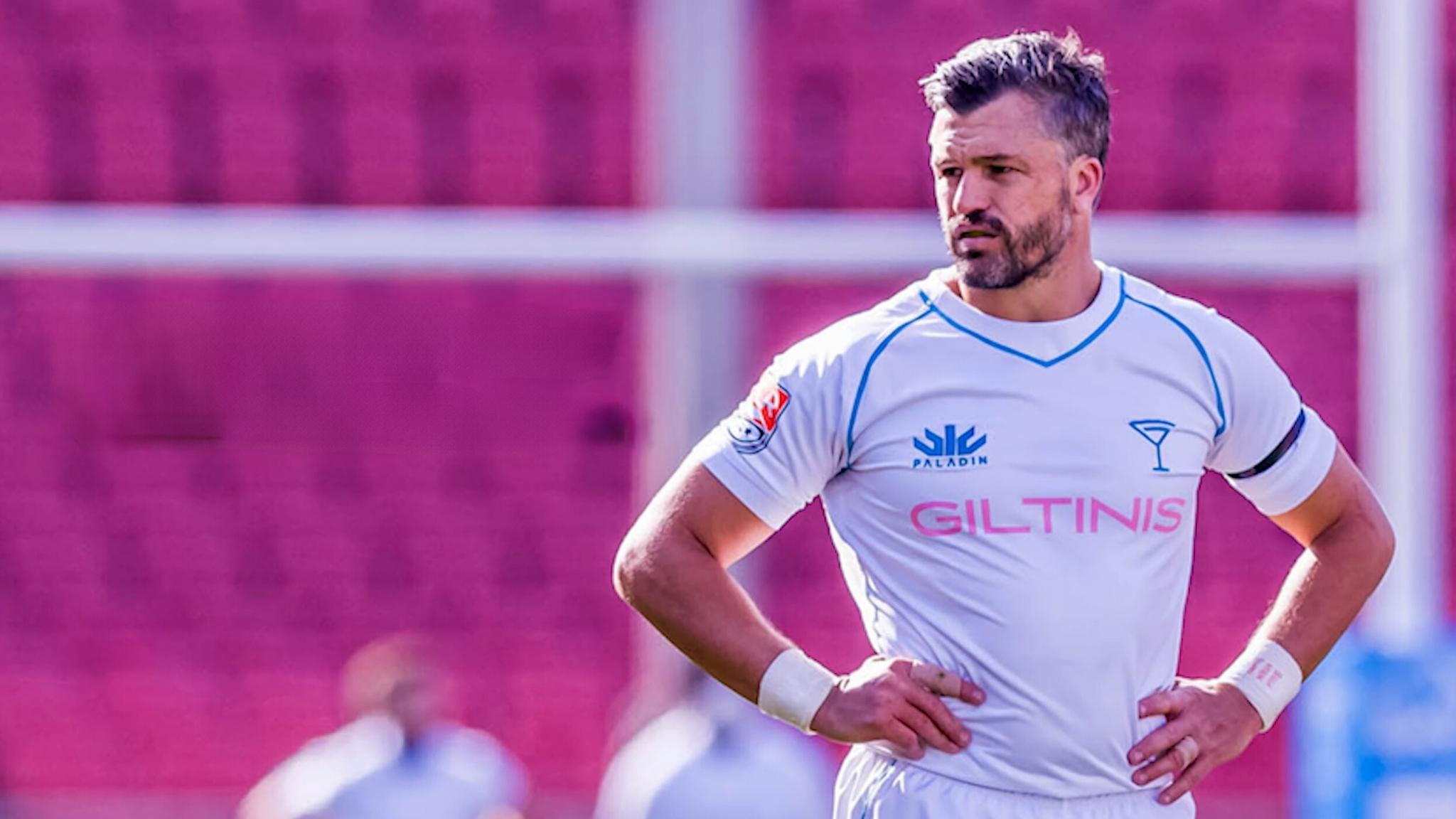
| Team | League | Notable Players | City/State |
|---|---|---|---|
| LA Giltinis | MLR | Matt Giteau, Adam Ashley-Cooper | Los Angeles, CA |
| New York Ironworkers | MLR | Andy Ellis, Nate Brakeley | New York, NY |
| Seattle Seawolves | MLR | Riekert Hattingh, JP Smith | Seattle, WA |
| Houston Sabercats | MLR | Cecil Afrika, Kieran Farmer | Houston, TX |
| San Diego Legion | MLR | Chris Robshaw, Ma’a Nonu | San Diego, CA |
13. Wrestling

Wrestling in the United States encompasses both amateur and professional styles, with each having its own distinct appeal.
Amateur wrestling, rooted in tradition and competition, thrives in schools, colleges, and international tournaments, while professional wrestling entertains millions through scripted matches and dramatic storytelling.
It’s surely keeping it position among most popular sports for quite a long time, even though many people are criticizing it and question whether it is a “real sport” at all.
The History of Wrestling in the US
Amateur wrestling traces back to the early 20th century, becoming a staple in high schools and colleges nationwide.
The NCAA Wrestling Championships remain one of the most competitive and respected tournaments. U.S. wrestlers have also achieved international success, winning numerous Olympic and World Championship medals.
Professional wrestling emerged in the early 1900s with traveling carnivals. By the mid-20th century, promotions like WWE (formerly WWF) turned wrestling into a major entertainment industry, combining athleticism with theatrical elements.
Popularity and Viewership
- NCAA Wrestling: Collegiate wrestling is most popular in states like Iowa, Pennsylvania, and Oklahoma, with thousands attending championship tournaments.
- Olympic Wrestling: The U.S. has produced numerous Olympic champions, including legends like Dan Gable and Cael Sanderson.
- WWE Entertainment: WWE draws millions of viewers weekly, with events like WrestleMania generating global attention. WrestleMania 39 in 2023 attracted over 160,000 fans across two nights.
Top Amateur and Professional Wrestlers
| Wrestler | Style | Achievements |
|---|---|---|
| Dan Gable | Amateur | Olympic gold medalist, undefeated NCAA career |
| Cael Sanderson | Amateur | 4-time NCAA champion, Olympic gold medalist |
| Hulk Hogan | Professional | WWE Hall of Famer, multiple-time world champion |
| The Rock | Professional | WWE Champion turned global movie star |
| John Cena | Professional | 16-time WWE Champion, philanthropist |
Cultural and Financial Impact
Wrestling contributes to American most popular sports and entertainment in unique ways:
- Economic Influence: WWE generates over $1.3 billion annually through ticket sales, merchandise, and media rights.
- Community Programs: Wrestling programs in schools foster discipline and teamwork, particularly in underprivileged areas.
- Pop Culture: Professional wrestlers like The Rock and John Cena have transitioned into mainstream entertainment, bringing wrestling broader recognition.
FAQs
Which sport has the highest-paid athletes in the United States?
American football and basketball typically feature the highest-paid athletes in the United States. NFL quarterbacks, such as Patrick Mahomes, often sign contracts worth over $50 million per year, while NBA players like LeBron James earn comparable salaries along with significant endorsement deals.
What is the most-watched sports event in the United States?
The Super Bowl is the most popular sports event in the United States, drawing over 100 million viewers annually. Its widespread appeal is fueled by high-profile performances, commercials, and the championship stakes of the NFL.
Why do American sports leagues lack promotion and relegation systems?
Most American sports leagues, including the NFL, NBA, and MLB, operate as closed systems without promotion and relegation due to their franchise-based model. Teams are privately owned, and the leagues prioritize financial stability over competitive restructuring.
How does Title IX impact sports in the United States?
Title IX, a federal civil rights law, ensures gender equity in sports by mandating equal opportunities for men and women in federally funded educational institutions. It has significantly increased the participation of women in collegiate and amateur sports.
Last Words
The most popular sports, including American football, basketball, baseball, and soccer, continue to draw millions of fans through their rich histories, thrilling competitions, and the unique experiences they offer. From professional leagues to grassroots programs, each sport plays a vital role in shaping American identity.
The enduring popularity of these sports lies in their ability to unite people, inspire greatness, and provide moments of joy and excitement. As trends evolve and new stars emerge, these 13 most popular sports will remain at the forefront of American life, keeping traditions alive while embracing the future of competition.
















